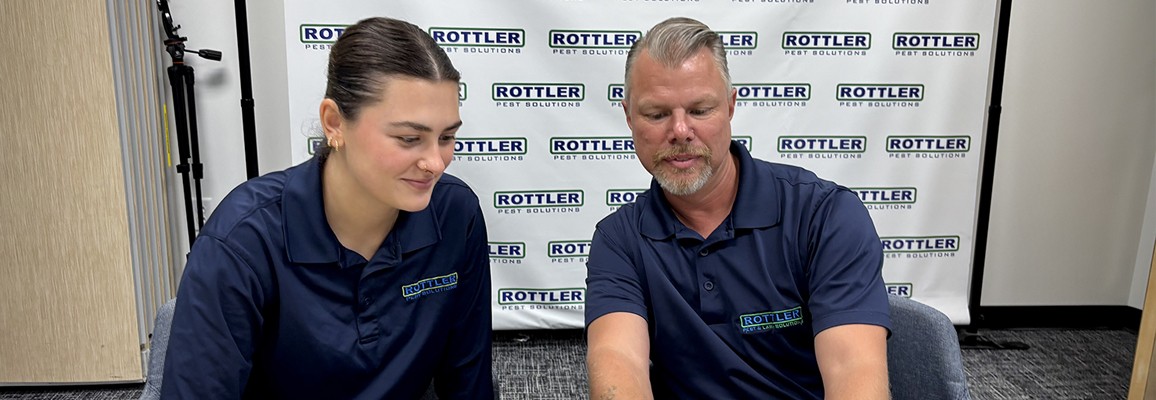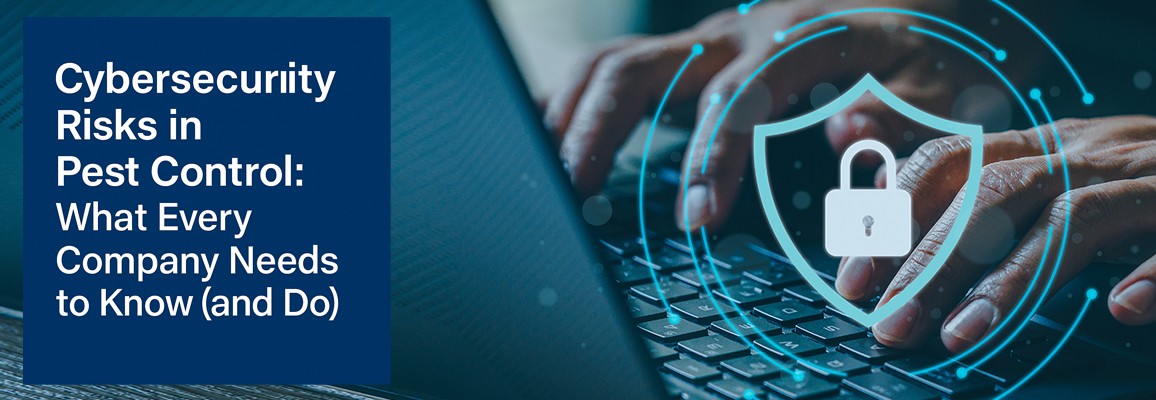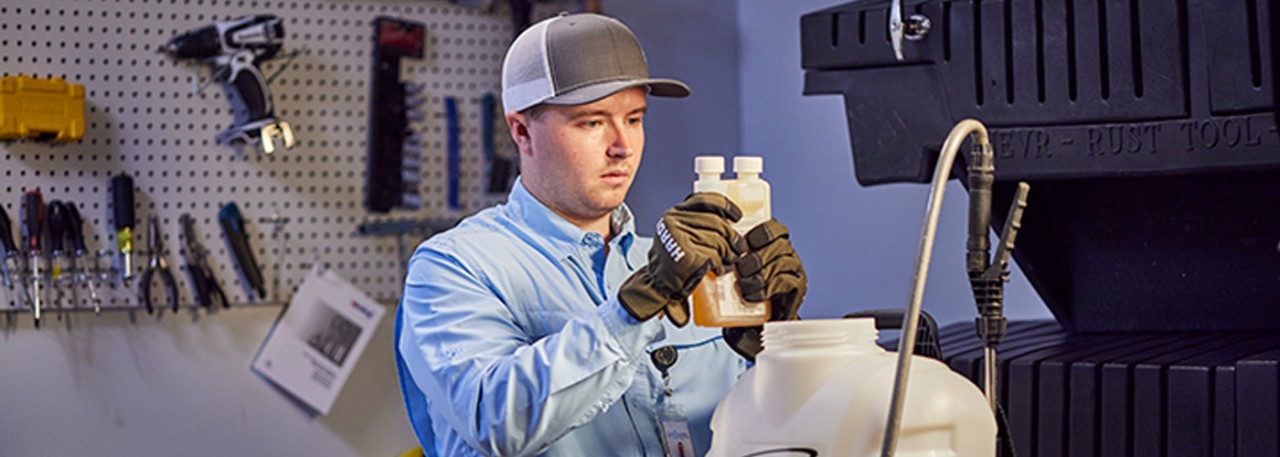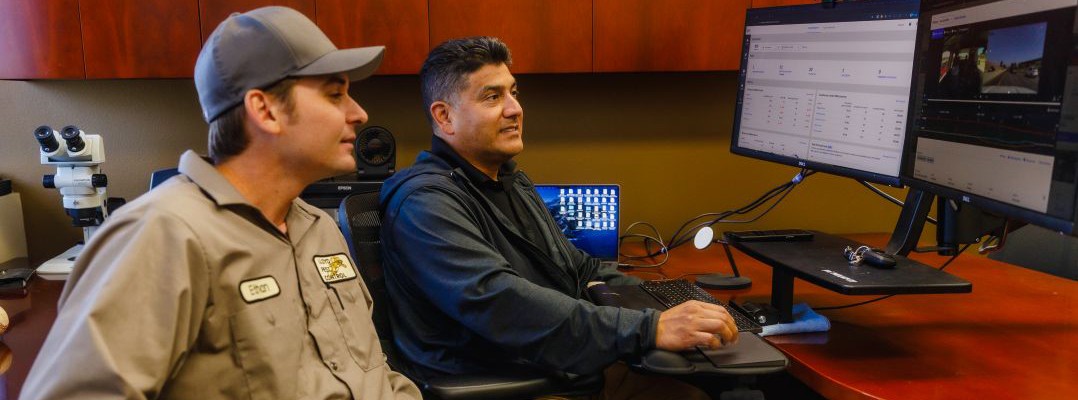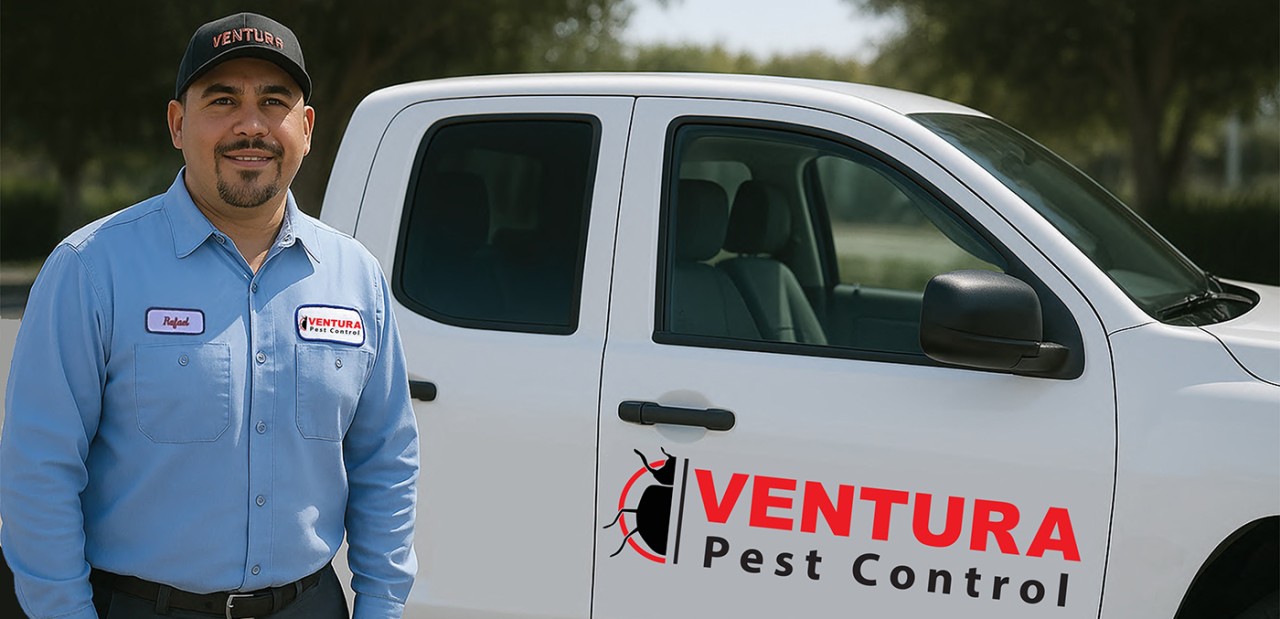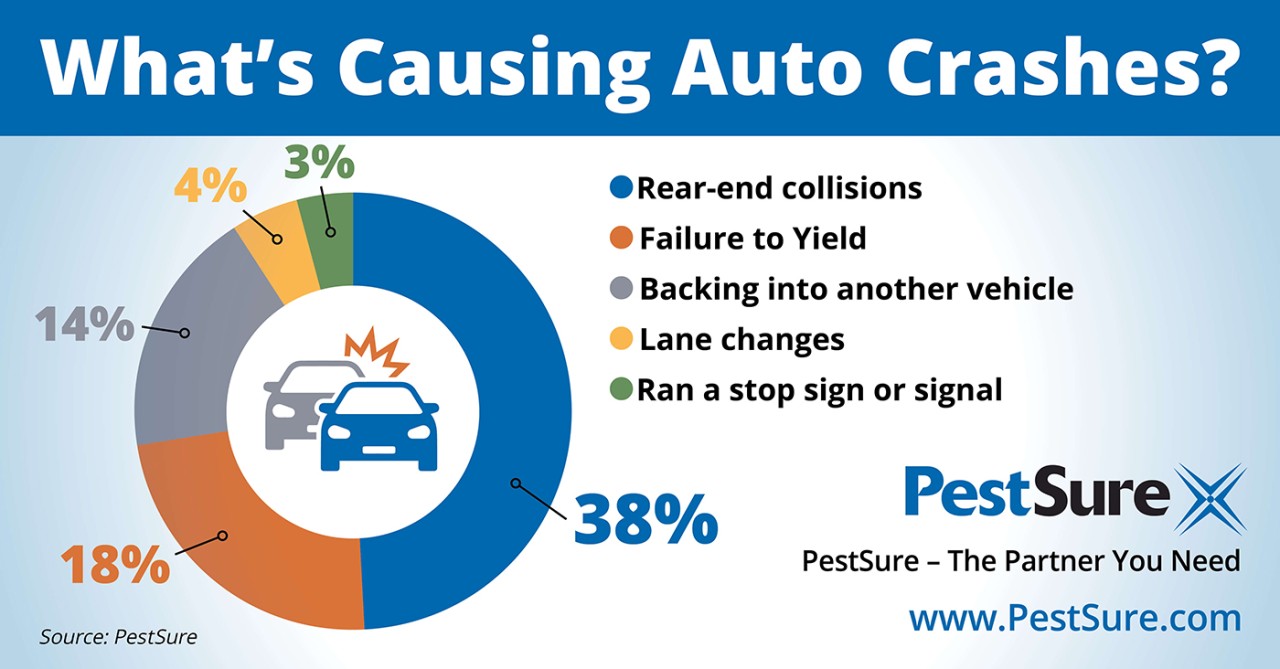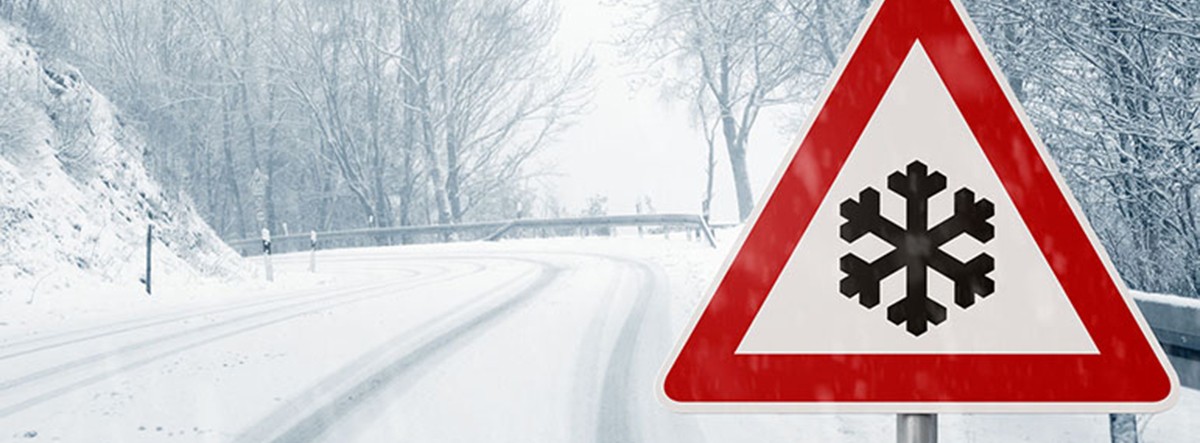While summer heat gets plenty of attention, winter brings its own serious safety challenges for pest control professionals especially those working in cold-weather climates. Snow, ice, reduced daylight, and hazardous driving conditions all increase the risk of injuries and accidents on the job. As temperatures drop, awareness and preparation become critical to keeping technicians safe and operations running smoothly.
Just as with heat exposure, cold-related hazards can be managed with proper planning, training, and smart work practices.
Winter Weather Hazards to Watch
Slips, Trips, and Falls - Icy sidewalks, snow-covered steps, frozen driveways, and wet entryways create prime conditions for slips and falls. These incidents remain one of the leading causes of workplace injuries during winter months and can result in sprains, fractures, or worse.
Driving in Snow, Ice, and Early Darkness - Winter driving increases exposure to vehicle accidents due to slick roads, limited visibility, and longer stopping distances. Add early sunsets and unpredictable weather, and technicians may find themselves navigating challenging conditions during both morning and evening routes.
The start of a new year is a natural time for pest control company owners and managers to take stock of what’s working, what needs improvement, and where risks may be hiding. For many pest management professionals (PMPs), safety training often falls into the category of “important but” as the demands of the daily grind take priority.
As you look ahead to 2026, now is the right time to establish clear, realistic safety training resolutions that protect your employees, strengthen your operation, and reduce preventable claims. The most effective safety programs aren’t complicated; they’re consistent, practical, and built into the rhythm of your business.
Here are key safety training resolutions every pest control company should consider committing to in the year ahead.
1. Commit to Consistent, Scheduled Training
One of the most common challenges in safety programs is inconsistency. Training that happens only after an incident or inconsistently rarely delivers lasting results.
The end of the year is one of the most valuable times to step back and evaluate the strength of your safety training and compliance programs. A structured, honest safety training audit helps you identify gaps, reinforce what’s working, and set clear expectations for the year ahead.
Whether you’re a pest control business owner, branch manager, or training supervisor, a year-end review of your safety program ensures your company will enter 2026 prepared, compliant, and aligned with PestSure’s commitment to risk management, loss prevention and continuous improvement through training and education.
Below are practical steps to help you evaluate your current safety programs, refresh your training calendar, and reinvigorate (or create) your safety committee using proven best practices.
Start With a Comprehensive Program Review
An effective year-end audit begins with a full evaluation of your safety activities over the past 12 months. Consider these core areas:
It only takes a moment of distraction for something to go wrong and in this case, that moment could have caused a serious accident.
A pest management technician shared a story that’s worth every technician and safety manager’s attention. After completing work under the eaves of a customer’s home, he carried his ladder back to his truck and placed it on the rails to secure it for the drive. Before he could finish tying it down, the customer called him over to discuss another pest issue behind the house.
After inspecting the shed and completing an additional service, the technician packed up, thanked the customer, and drove away. About six blocks later, as he accelerated onto the freeway ramp, he heard a sharp scraping noise. His ladder had slid off the truck. Fortunately, no vehicles were behind him, and the ladder tumbled harmlessly to the shoulder. The technician immediately pulled over and retrieved it.
No one was hurt. The only damage was a dented ladder, but the technician knew how differently this story could have ended.
If a motorcyclist had been behind him, or if he had been driving at full freeway speed, the result could have been catastrophic. The technician’s candor in sharing his experience is a reminder that small lapses can lead to major risks and that safety requires attention, even in familiar situations.
When Rottler Pest Solutions set out to strengthen driver safety across its 300-plus vehicle fleet, leadership knew it would take more than reminders and policies; it required a complete cultural shift. With growing awareness of the risks tied to mobile device use, the company took a hard look at how to better protect employees, customers, and its brand.
Using telematics data, internal safety reviews, and lessons learned from past incidents, Rottler developed a comprehensive no cell phone policy focused on prevention, accountability, and support. The initiative combined clear expectations with real-time monitoring and consistent coaching, ensuring every employee understood the “why” behind the rule and how it benefited everyone on the road.
A Costly Reminder That Sparked Change
In June 2024, just months before the rollout of Rottler’s no cell phone policy, a distracted driving incident underscored the urgency of this effort. One of Rottler’s technicians was positioned in one of two left-turn lanes and began his turn after noticing the cars beside him move.
What he didn’t realize was that while the adjacent through lanes had turned green, his lane still showed red. Moments earlier, he had been looking at his phone and, although he set it down before accelerating, the distraction lingered leading him to proceed through the intersection and collide with another vehicle.
Even industries that seem “offline” or hands-on - like pest control - are not immune to cyber risk. As digital tools, cloud systems, and remote access become more integrated into operations, pest control companies face growing threats to their data, finances, and reputation.
Over the course of Cybersecurity Awareness Month in October, PestSure wants to call attention to the top threats pest control firms should watch in 2025 and how to defend against them.
1. Phishing and Social Engineering Evolved
Phishing remains a leading entry point but in 2025, it’s smarter, more targeted, and increasingly powered by AI. Attackers may impersonate your scheduling software vendor, supplier, or even a client, using deepfake audio or personalized email content. These campaigns are harder to spot because they adapt to your organization’s language and behavior.
2. Ransomware-as-a-Service (RaaS) and Double Extortion
Conference Delivers Industry-Specific Insights to Help Pest Control Companies Build Safer, Stronger Workplaces
Designing and implementing an effective safety program requires all the right pieces working together. That was the focus of the 2025 PestSure Safety and Loss Prevention Conference, held September 9-10 in Fort Lauderdale, Florida.
The annual event brought together representatives from more than 60 insured companies across the country for two days of interactive sessions, peer-to-peer networking, and practical takeaways tailored specifically to pest management companies. With 15 breakout sessions and multiple keynote addresses, attendees left with proven strategies to strengthen their safety programs and reduce risk.
“The Safety and Loss Prevention Conference is part of PestSure’s unique value proposition to our insureds,” said Todd Burke, COO of PestSure. “There is no other event in the industry like it. The program is packed with timely, relevant education that directly addresses the challenges our insureds face every day in the field. Our insureds receive tremendous value by attending.”
Linda Midyett, vice president and loss control director for PestSure, updated attendees on the captive’s cell-free initiative introduced in spring 2024. One year into the program, Midyett reported that PestSure has seen a 14 percent decline in auto crashes compared to the previous year, a reduction largely attributed to the early success and strong adoption of the initiative by its insureds.
September is Fall Prevention Month, making it the perfect time to reinforce one of the most common - and costly - workplace safety issues in our industry: trips and falls. While many accidents may seem minor at first glance, their impact can be serious, leading to injuries, lost time, and significant claims costs. The good news is that most of these incidents are preventable with awareness, preparation, and consistent training.
What the Numbers Tell Us
A review of recent PestSure workers’ compensation claims, slips, trips, and falls have led to injuries involving shoulders, knees, ankles, hips, and the spine. The costs add up quickly:
- Slipped off curb: $154,000
- Slipped on sand: $375,000
- Stepped off curb: $169,000
- Tripped down steps: $218,000
- Tripped on garden hose: $310,000
- Slipped on leaves: $233,000
- Slipped on ice: $203,000
These examples underscore the fact that hazards are everywhere. Something as simple as a curb, a pile of wet leaves, a garden hose, or a patch of uneven ground can trigger a serious accident.
Why Hazards Are Easy to Miss
Lawsuits are an unfortunate reality in the pest control industry whether it’s a vehicle accident, property damage, or alleged service failure. And if your company ends up in court, it’s highly likely someone from your team will be asked to give a deposition.
Depositions matter - a lot. What’s said during them can shape the trajectory of a lawsuit and the outcome of any trial or settlement. That’s why being thoroughly prepared isn’t just smart - it’s essential.
At the 2024 PestSure Safety & Loss Prevention Conference, the opening session drove this point home through a live mock deposition led by attorneys James Foster and Joe Panatera of Cassidy Schade LLP. They warned attendees about the rise in “nuclear verdicts”- plaintiff awards exceeding $10 million - particularly in auto liability cases, and the critical role that deposition preparation plays in preventing them.
“Corporate depositions should keep you up at night,” said Foster. “With nuclear verdicts becoming increasingly more common, it is essential to prepare your company’s representative.”
This blog isn’t legal advice, but it will give you practical tips to help your team approach depositions with confidence. Always consult your company attorney for case-specific guidance.
Running a successful pest control company involves more than keeping pests out of customers’ homes and businesses - it means keeping your team safe while they do it. From driving between service calls to navigating attics, crawlspaces, and rooftops, pest control technicians face a wide range of risks every day. And those risks come with real financial consequences especially when it comes to insurance.
While many factors go into determining insurance premiums like claims history, company size, geographic location, and services offered, one factor you can influence directly is your safety training program. A commitment to a consistent, comprehensive safety training can reduce accidents in the long run and help you control what you pay for coverage.
Insurance Premiums and the Cost of Risk
At PestSure, we work with pest management companies across the country and see firsthand how safety practices affect claims, losses, and insurance costs. When your company has frequent claims due to preventable accidents, carriers take notice and rates often rise accordingly.
But when companies invest in safety culture and training, the opposite tends to happen - fewer accidents, fewer claims, and more control over premiums.
Driving a service vehicle all day can be stressful but staying calm behind the wheel is essential. With aggressive driving and road‑rage incidents on the rise, pest control professionals need practical strategies to stay safe and focused without creating tension on the roads.
1. Know the Bigger Picture
Recent studies show that more than 90% of American drivers have witnessed road rage in the past year, and over 80% admit to acting aggressively at least once, according to the AAA Foundation for Traffic Safety. While you may never be directly involved, these trends highlight how easily tempers flare and escalate. Awareness is your first line of defense.
2. Build in Buffer Time
Leave early, account for potential delays, and avoid feeling rushed. Studies link impatience and tight schedules with aggressive behaviors like honking the horn (the most common behavior), speeding, running red lights/stop signs and tailgating as some of the most common triggers for road rage. A few extra minutes can make all the difference to your composure and your safety.
When Lloyd Pest Control rolled out its distracted driving policy in spring 2024, it wasn’t just about reducing risk it was about reinforcing a companywide culture of safety and accountability.
With support from executive leadership and a data-driven approach, the San Diego-based company launched a no-cell-phone-use policy backed by AI-enabled vehicle cameras and clear disciplinary measures. The goal: reduce accidents, protect employees, and demonstrate leadership in an industry where driving is often the most dangerous part of the job.
Why It Was Time to Act
For Lloyd, the decision to formalize a distracted driving policy came after a series of costly incidents and a growing awareness of the legal and financial risks.
“We had a 19-mile-per-hour accident, and everyone drove away fine,” says Efrain Velasco, Lloyd’s Technical Director. “Then we got a demand letter asking for a seven figure settlement (the case was settled for $1.4 million). Another one came for $3 million. These weren’t even catastrophic injuries, but the settlement demands were.”
Safety in the pest control industry isn’t just about safe ladder usage protocols, reading product labels and best practices when using PPE, it’s about people. In the pest control industry, where technicians face daily hazards on the road, in crawl spaces, and in customers’ homes and businesses, a strong safety culture is essential. And like any part of your business, your safety culture can only improve if you’re willing to listen and act.
Whether you’re a mid-size company serving one market or a regional multi-branch operation, building trust with your team starts with making safety a shared responsibility. One of the most effective ways to do that? Ask for feedback and do something with the information you gather.
Why Safety Feedback is a Game Changer
Front line pest control professionals know the job better than anyone, and they often see risks or improvement opportunities before management does. But if they don’t feel comfortable sharing concerns or don’t think their feedback will lead to action, you’re missing a critical piece of the safety puzzle.
Collecting and responding to feedback isn’t just about checking a box. It’s a proven way to:
Every day, pest control technicians head into the field with the goal of solving problems and protecting their customers' homes and businesses from unwanted and potentially dangerous and destructive pests.
It’s rewarding work but also demanding. The job environment changes constantly, often bringing new and unexpected hazards. And while we all intend to work safely, the reality is that unsafe behaviors can creep in, sometimes without us even realizing it.
So why do smart, experienced pest control professionals sometimes take risks that lead to accidents or injuries?
At PestSure, we believe the first step in building a strong safety culture is understanding why unsafe behavior happens. Most at-risk actions can be traced back to four key causes:
- Unfamiliarity
- Hurry
- Complacency
- Distraction
Let’s take a closer look at each, and how to recognize and prevent them in the field.
With a team of 43 employees and a fleet of 35 service vehicles, safety on the road is a top priority for Ventura Pest Control. The company has long emphasized a work-life balance for its technicians, with a residential focus that allows employees to be home in time for dinner, and to get there safely.
Ventura Pest Control, a locally owned pest management company based in Southern California, has been serving residential and commercial clients in Los Angeles, Ventura, and Santa Barbara counties since 1993.
The Challenge: Distracted Driving and No-Fault Accidents
Several years ago, Scott Moberly, co-owner of Ventura Pest Control, recognized a troubling trend: an increasing number of no-fault accidents, many caused by distracted driving. These included incidents like backing into poles or hitting fire hydrants - minor but costly mistakes that added up. The company had a no-cell phone policy in place, but it wasn’t robust enough to make a lasting impact.
"Before we really dove into this, we were purely reactionary,” said Moberly. “We disciplined people for poor driving, but we didn’t have a clear system to measure performance or reward good behavior.”
April is National Distracted Driving Awareness Month, a time to spotlight the risks of unsafe driving behaviors. For pest control service professionals who spend countless hours on the road, staying focused behind the wheel is critical. Recent data from PestSure highlights the top causes of auto crashes in the industry, reinforcing the need for fleet safety policies and driver awareness training.
According to PestSure’s latest analysis, the most frequent type of accident occurs when a driver rear-ends another vehicle, accounting for 38% of reported incidents. Other common causes include:
- Failure to Yield - 18%
- Backing into another vehicle – 14%
- Lane changes – 4%
- Ran a stop sign or signal – 3%
“These statistics highlight a clear need for continued driver education and proactive safety measures,” said Linda Midyett, vice president/loss control director at PestSure. “Rear-end collisions, which account for over a third of industry accidents, are largely preventable. By eliminating distractions and maintaining proper following distances, service professionals can significantly reduce their risk on the road.”
Distracted driving significantly increases the likelihood of rear-end collisions because it reduces a driver's situational awareness, reaction time, and ability to maintain safe following distances. Here’s why:
Cognitive Distraction – Even hands-free phone conversations can cause mental distraction, making drivers slower to recognize hazards and fail to react appropriately.
Ladders are a necessary tool in pest control, but they can also pose significant safety risks if not used properly. Every year, thousands of ladder-related injuries occur due to improper usage, lack of inspection, or failure to follow basic safety guidelines. By following these six essential rules, you can minimize the risk of falls and injuries while working with ladders.
1. Assess Your Readiness for Ladder Use
Before stepping onto a ladder, evaluate your physical condition to ensure safe use. Consider your strength, balance, and vision, and avoid using a ladder if you feel dizzy or unsteady.
Additionally, wear appropriate footwear with non-slip soles and securely tied laces. Avoid loose clothing or secure it to prevent it from catching on the ladder while climbing.
2. Choose the Right Ladder for the Job
Those scratches and scurrying sounds pest control customers hear could be unwelcome pests making themselves at home. While attics may serve as just a storage space for homeowners, to rodents, bats, raccoons, insects, and spiders, it offers shelter, warmth, and a safe place to nest.
As such, pest control technicians must access attics to conduct inspections, cleanout and treatments for the pests. There are, however, risks for technicians working in attics. Inadequate lighting, poor ventilation, unstable footing, limited means of access and egress, and overhead hazards all combine to make an attic a difficult and sometimes hazardous place for pest control technicians to work.
Assess the Access Point
For technicians, safety while working in attics begins when they access an attic. Before entering an attic, evaluate the condition of the access point. Many attics are accessed via pulldown stairs, scuttle holes, or crawl spaces—each with potential safety hazards.
- Pulldown Stairs - Check for signs of wear, damage, or loose screws. If the stairs feel unstable or appear weak, use a secure ladder instead.
- Ladders - Ensure the ladder is the proper height, placed on a stable surface and fully extended before climbing. If needed, have a colleague secure it while you ascend.
- Scuttle Holes - If accessing an attic through a ceiling opening, test the strength of the frame before applying full weight.
Carry Essential Gear
We’ve all heard the warnings: “Don’t drive distracted.” “Keep your eyes on the road.” “Stay focused behind the wheel.”
Bill Welsh, ACE, executive vice president of operations and strategic initiatives, of Rose Pest Solutions in Michigan thought he had it under control. He wasn’t scrolling through social media or texting, just talking on the phone to a colleague. Harmless, right? Or so he thought, until one day he found himself 20 miles past his exit, completely oblivious to how far he’d gone.
The Day It Happened
It started like any other drive. Welsh thought he’d put his “windshield time” time to good use and catch up on a few calls. Both hands were on the wheel (his phone was on speaker), and eyes were technically on the road, but where was his mind? His mind was somewhere else entirely.
He dove into his conversation and before he knew it, Welsh had missed his exit – not by a mile or two, but by 20 miles. That was when Welsh had his “a ha” moment: He hadn’t been paying attention to the road ahead of him at all.
Winter can bring unique challenges for pest control technicians, from icy surfaces to cold temperatures and unpredictable weather conditions. While pests don't take the season off, it’s essential for technicians to prioritize safety while delivering top-notch service.
To maintain good safety protocols during the winter, PestSure offers the following best practices to add to your winter training sessions.
Dress for the Weather
Wearing the right clothing is the first step to staying safe and comfortable in cold conditions.
- Layer Up - Use moisture-wicking base layers, insulating mid-layers, and waterproof outer layers. This combination helps regulate body temperature while keeping you dry.
- Insulated Gloves - Protect your hands with gloves that provide warmth without sacrificing dexterity for handling tools and equipment.
- Non-Slip Boots - Invest in insulated, waterproof boots with slip-resistant soles to navigate icy or wet surfaces safely.
- Hats and Neck Protection - A beanie or thermal hat and a scarf or gaiter help retain body heat, which is crucial when working outdoors.
Stay Alert to Weather Conditions






